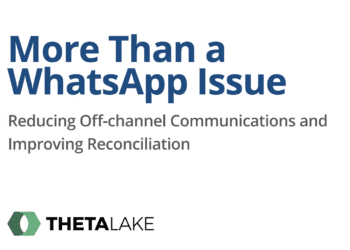Smart organizations know the future is digital, and it’s not a question of “should we?” but “how much” when it comes to investing in digital transformation. But as Protiviti’s Jim DeLoach warns, many firms are still falling short of harnessing the full power of data.
In the third decade of the 21st century, smart companies and boards representing all industries and sizes and types of organizations recognize that the pace of technological change continues at warp speed. The question in the C-suite and boardroom of 10 years ago — “Should we invest in digital transformation?” — has transitioned to a different question today: “How much should we invest and, more importantly, how fast should we invest given our accountability to shareholders?”
The apparent simplicity of this question belies the underlying complexities of the strategic conversation around prioritizing resource allocation, a conversation that has huge implications to the customer experience that drives revenue generation and the company’s competitive position.
The results of a recent survey of more than 500 executives and directors at U.S. companies in nearly every industry and size category indicate “a sizable shortfall in the organizational behaviors needed to drive business growth in the digital age.” A significant majority of companies have “yet to transform meaningfully to true data-driven cultures” and are not using the data they have effectively. The research suggests they are trying to figure out the best way forward, despite knowing there are opportunities to leapfrog the competition once they discover the “secret sauce.”
Discussions of digital transformation, which lead many to search for the “problem” the company is trying to solve, have given way to a focus on digital experience, which entails building a sustainable bridge between the customer and the company’s infrastructure that is supported by the flow of information. Over 40% of companies lack a holistic digital experience strategy and instead deploy multiple digital experience capabilities through siloed point solutions. This behavior is expected of companies that are not truly digital at their core.
Another challenge emerges when companies acquire new technologies: They fail to fully utilize their capabilities. For example, only 14% of companies have significantly leveraged the full capabilities of the digital experience platform in which they have invested. This, again, is likely due to the lack of a digital foundation underpinning the overall strategy.
But the real kicker lies with the revenue premium enjoyed by digitally mature organizations with a coherent digital strategy and full utilization of the capabilities in which they have invested, ranging as high as 16% for retail with a wide range across industries — e.g., automotive and media at 3%, chemicals and life sciences at 4%, banking and industrial products at 5%, travel at 9%, insurance at 10% , and energy and utilities at 12%.
Another startling statistic: Almost 70% of the data available to businesses is unutilized. Let that number soak in for a moment, for it conveys a strong impression that companies are either struggling to get out of the analog quagmire or lacking the digital tools and analytics discipline to leverage the data they have. Or maybe both.
Thus enters the digital investment question. When considering how much and how fast companies should invest, executives and directors should consider the following questions:
- What is the business plan, which includes supporting metrics, that informs us whether we are investing in digital transformation of processes, products and services at a velocity sufficient to impact our digital experience and top and bottom lines?
- What are the warning signs relating to customer stickiness and security that tell us on a timely basis that we need to step up the velocity at which we invest?
- Are we paying sufficient attention to the supply side — e.g., supply chain management — as we focus on sustaining and increasing demand?
- What are directors’ duty of care responsibilities to shareholders in ensuring that the companies they serve remain competitive in the digital economy?
While the options available in responding to these questions are often constrained due to finite resources, following are suggestions for executive teams and their boards to consider as they assess the level and velocity of digital investment:
The conversation requires digitally savvy and experienced executives and directors at the table
Talent wins in this game. The constraint of “analog thinking” bogs down the dialogue into an endless “paralysis by analysis” mode. CEOs need the best and brightest talent at the table to formulate breakthrough ideas.
Many executives in the C-suite lack the knowledge and experience to understand the implications of advanced and emerging technologies, much less put them to work in the business. The value to the CEO of a diversity of perspectives in this conversation cannot be overstated. The good news: Progress begins with a relentless focus on the customer experience (see below).
What customers want provides a “bright line” clarifier, as it drives focus in gathering data needed to make informed decisions and identifying the technologies and talent needed to improve customer-facing processes and offerings.
Companies supported by boards with three or more digital-savvy directors report higher profit margins, revenue growth, return on assets and market capitalization. While boards should look at the extent to which “digital savviness” is present in the boardroom, they should also have access to digital experience, whether from a director at the table or from a board adviser. This means looking at the pool of seasoned executives with a digital background who helped their companies innovate and/or undertake a major change initiative or who served in a role requiring strong technology acumen (such as chief information officer, chief technology officer or chief digital officer).
Focus strategically on enhancing the customer experience, improving operations and securing the company’s positioning within the value chain
Executive management and the board should focus the digital investment discussion by asking the tough questions about what is really happening in the company and industry around the customer experience and how it is being improved both now and in the future. The traditional discussion around understanding the strategy as a context for identifying the technology and other resources needed to execute it may be too introspective in today’s digital environment. Data and metrics around customer satisfaction and loyalty, innovation and speed-to-market relative to competitors may present a more insightful basis for deciding where to focus.
Think and act digitally when evaluating innovation performance
The conversation around digitizing new and enhanced products and services to strengthen customer engagement and relationships and deploying digital technologies to improve operational performance and information for decision-making is an important one. It should be grounded in business realities, meaning innovation is bound in a finite way to the physical, financial and human capital available.
Sufficient agenda time should be set aside in the C-suite and boardroom to discuss innovation strategy and culture. The CEO and board chair should encourage open discussion on direction and progress. The dialogue should, furthermore, be supported with appropriate innovation-specific metrics that tell the full story regarding innovation and growth-strategy performance relative to competitors, feedback on the customer experience, return on innovation investments, and effectiveness of the company’s innovation culture and capabilities.
Focus relentlessly on the customer and customer experience
Today’s customers are buying based on their experience with a company and whether a product or service aligns with their personal values, including access, inclusivity, sustainability and trust. As noted earlier, speed to market is paramount in the digital age. Agile organizations and cultures embrace a discipline around the customer experience, e.g., there is a focused effort to blend institutional knowledge and digital perspectives to channel technology initiatives to improve the customer experience continuously by connecting the decision-making process to customer value. This in turn drives resource-allocation decisions.
In this regard, leaders should anchor the discussion to brand purpose. Communication channels eliciting customer feedback on brand experience to understand the most impactful customer expectations and experiences augment the discussion. This process will help prioritize how and where to invest.
Data offering “voice of the customer” insights is the strongest foundation for critical decision-making involving allocation of finite resources. Again, customer feedback loops help focus initiatives around improving customer experiences.
Successful collaboration and efficient resource allocation require technology and business leaders to work together. C-suite members, including the chief information security officer and chief risk officer, along with key business unit executives and compliance leadership, should collaborate as strategic partners to make appropriate, customer-connected decisions that are sharply focused on outcomes. Bottom line, the CEO should be satisfied that the discussion generates the needed insights as well as the best results.
Take steps now to maximize ROI
Optimizing return on investment is an integral part of efficient resource allocation. The CEO and the board should expect to see alignment of efforts across the organization and its budgets and priorities with a focus on value to the customer and the customer’s end-to-end journey. For example, the chief data officer or chief product officer should provide a technology roadmap for customer-facing and growth technology that incorporates data, privacy and regulatory compliance elements depending on the industry. An Agile mindset to updating software development lifecycles and budgetary processes enables organizations to optimally meet market, customer and employee needs for pace and speed for the most valued features and functions. Once again, these perspectives will help prioritize digital investments.
Finally, remember the all-important supply side
There is nothing worse for a brand than to drive demand but fail to deliver. Leaders should ensure sufficient attention is given to managing supply constraints and avoiding supply chain disruptions so that digital investments pay off. This may entail closer attention to inventory management and demand forecasting.
The above discussion should help companies address the challenge of investing at a sufficient pace to transform to a true digital framework for doing business. This is a challenge every CEO and board must meet head-on to sustain the viability of the business.



 Jim DeLoach, a founding
Jim DeLoach, a founding 






